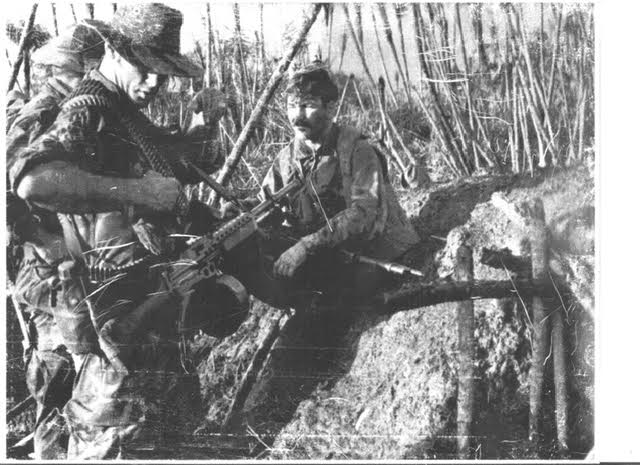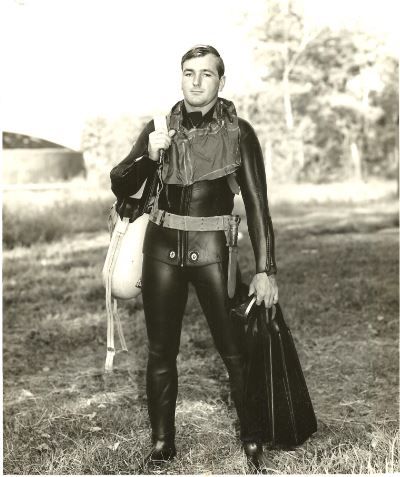The names Martha and Hunter Grimes are well known in the North Country, and especially in Alexandra Bay. Martha was born and raised in Alexandria Bay. During her career as an educator, Martha taught various Primary Level grades at Alexandria Central School. Since retiring, she has been actively involved with the Alexandria Township Historical Society and the Cornwall Brothers Store Museum and its interpretation, in Alexandria Bay, NY.

Martha's husband, Hunter Grimes, was undoubtedly a genuine ‘River Rat’ – a term given to those who spend their lives on, in, beside, or under the River. In 1989, Canadian author Shawn Thompson wrote his book, River Rats: The People of the Thousand Islands; page 68 has the Hunter Grimes story. Hunter died in 2013, and TI Life paid tribute to this gentleman in the September 2015 issue in "Hunter Grimes, A River Loss."
Hunter and his wife Martha have devoted their lives to their community; both have been recognized for their volunteer efforts and leadership.
Food for Thought!
The St. Lawrence River valley's ecosystem offers a bounty of food sources to delight the adventurous gastronome.
Having shared nearly fifty years with one who pursued every critter that ran, swam, flew, or hopped, I believe I can say most of our main courses and many of the side dishes were a harvest of the available natural resources on our doorstep. A wide variety of game, waterfowl, and fish were supplemented by plant life, such as wild berries, milkweed, cattails, puffballs, leeks, mushrooms, and dandelions.
The act of providing food was committed with reverence for the quarry. If it was harvested, it was eaten. Each sacrifice was made to nourish the family and always prepared for the table. The grocery bills were manageable and fewer additives, or preservatives, threatened our health.

This self-imposed rule did backfire on the provider on more than one occasion. Already having the reputation that he was the crazy kid who would try any prize the River could provide, the novice hunter took the ill-intended recommendation of a local River Rat, who promised that roasted Blue Heron was a great delicacy. The resulting violence of gastric distress lasted several days and proved to be a hard lesson learned. The River Rat and several of his cronies enjoyed a good laugh at their victim's expense.
First Date
Our first occasion to harvest and share food took place when we were fifteen, a first date disguised as a lesson on how to catch bass by a master teacher. My beginner's luck earned the reward of dinner for my family, followed by a trip to the E.R. for the removal of a fishbone lodged in my throat. The romance nearly ended before it began.
Several years into our dating roller coaster, I joined him as an observer on a bone-chilling morning to sit in the woods on a deer watch. His instruction to "wear drab clothing and dull head covering, refrain from fidgeting, and absolutely no talking" was followed to the letter. After about twenty minutes, he abruptly announced we were leaving. Apparently, my close proximity detracted from his concentration!
Navy Recruitment
Our romance waxed and waned throughout high school and the four years following. He paid the price for not taking his responsibilities as a college freshman seriously. When SUC (translate!!) Oswego did not request his return for sophomore year, he did get an invitation from Uncle Sam. Before the date for him to appear for induction into the Army, he convinced a Navy recruiter to let him enlist, trading two years as a foot soldier for four years to be on, or near, water.
Our paths led in different directions in 1969, when I accepted a teaching position in Long Beach, California, and he shipped out for Vietnam as a member of SEAL Team 2.


His reputation as an adventurous eater followed him on his tour of duty. It was not unusual for patrols to be invited to share meals with friendly villagers, all dipping a hand into a communal pot shared around a fire. On one occasion, the chieftain laughed at his clumsiness but smiled proudly when he selected the delicacy of a chicken head by the beak, with no qualms. His teammates were happy to give him the dubious honor of showing respect for the village elder.
Honeymoon!

In late summer 1970, we stood on the threshold of our life of adventure together. We were Alaska bound, where he had enrolled at the University of Alaska in Wildlife Management. Our honeymoon became a grueling 4,000-mile trip in our 1969 Land Rover, camping in a two-person tent, preparing meals on a Coleman stove, and sharing a Navy issue casualty /sleeping bag with our Airedale puppy. The Land Rover had no radio and little evidence of spring suspension. We were forewarned about the perils of ricocheting rocks and stones thrown by other vehicles on the unpaved Alaska Highway and paid the price with two broken windshields.

The winter of 1970-71 in Fairbanks was brutal. The temperature dipped to -70° F at its lowest. Snow started falling in mid-September and never stopped. Survival on the G.I. Bill was a challenge for us, thankfully supplemented by the generous "Care Packages" and a little spending money we received from our families. His grandmother's gift of a crock of sourdough starter provided us with bread for over a year. Date night was a trip to the laundromat and sharing a coke - if there was a quarter left to spare.
The lack of resident status prevented acquiring a hunting license, so the pursuit of big game was out of the question. Before the snow set in, we did execute the Great Snowshoe Rabbit Drive and Debacle. I was put on watch in a sparsely treed forest, armed with a double-barrel shotgun. He carried a Ruger .22 pistol. He intended to circle behind me, stomp through the brush, and flush out a bevy of rabbits.
I heard the rustling, saw one solitary hare approaching, and froze. When I closed my eyes and pulled the trigger, the blast knocked me end over teakettle. The rabbit continued on his merry way. Plan B was executed after an exchange of firearms, and another drive began. The same scenario unfolded but with a different outcome. Against all odds, my shot with the Ruger was successful, my first and last time to reluctantly provide game for the table.

Frigid temperatures and deep snow drove the moose population into town, looking for food. My job at a daycare center included disposing of the trash from the cafeteria. I went armed with pots and pans to bang together if a moose was foraging in the burn barrel. The radio station announced streets to avoid during morning traffic because one or more moose had blocked them. Reports of vehicles and school buses being charged were common. Moose don't back down.
Our fortune improved when we were befriended by one of my co-workers. On the pretext that she had cleaned out her freezer to make room for more supplies, she would occasionally bring us portions of moose steak, salmon, and canned vegetables from her expansive garden. She sure cleaned her freezer quite often.
During our brief stay in Alaska we had the opportunity to participate in the annual dip-netting harvest of King Salmon on the Nenana River. The Riverbank approach was accomplished by driving across two strategically placed railroad ties that bridged a gorge, then following a winding gravel trail to the River. That lofty crossing was my first of many tests of faith in the adventures of our marriage. The River banks were lined with numerous indigenous people and others who had traveled from far and wide, all competing for prime River frontage. The Athabascan people had no limits on fish taken, and this was a major food source for them.
The technique was simple. Put the net in the water, and the fish will flip, flop, or swim into it. Then the fun begins. The fisherman flips the net and catch over his head and then spins to sit on top of the bucking fish until it can be subdued. The sixty-pound King Salmon that we took home fed us for many weeks.
Daylight, or the lack of it, dictated sleep patterns and recreational activities. From September until March, there was usually some hazy light between 11 am and 1 pm. From March onwards, as the days lengthened, the sun only set for a few hours. Most homes had black-out shades for the summer months.
We often ventured out with two Gerry Cans of gas (no gas stations in the bush), forded shallow streams in the Land Rover, and fished for grayling. One adventure took us to the Arctic Circle. Twenty hours of sunlight worked magic on the lush tomatoes grown at the hydroponic farm located there.
Alaska also gave us our "Small World Story," since where else but Alaska can you travel two hundred miles on a weekend jaunt, and the only other vehicle you meet happens to belong to your uncle's brother from St. Regis Falls, N.Y.? Rupert Rockhill was stationed at Eielson Air Force Base just outside of Fairbanks. We became good friends with the family and spent lots of time together after that chance encounter in the middle of nowhere.
Destiny brought us back to the River after a little over a year, and life resumed as it had been before the great adventure. He transferred to the School of Environmental Science and Forestry at Syracuse University. I accepted a job in our local school district.
End Part I.
By Martha Grimes
Martha Grimes is a storyteller from Alexandria Bay. This piece allows her to tell her story of life with a real River Rat, her husband, but also how their lives revolved around the St. Lawrence River valley's ecosystem which offers a "bounty of food sources to delight the adventurous gastronome."
Posted in: Volume 16, Issue 3, March 2021, Essay, History, Nature
Please click here if you are unable to post your comment.
